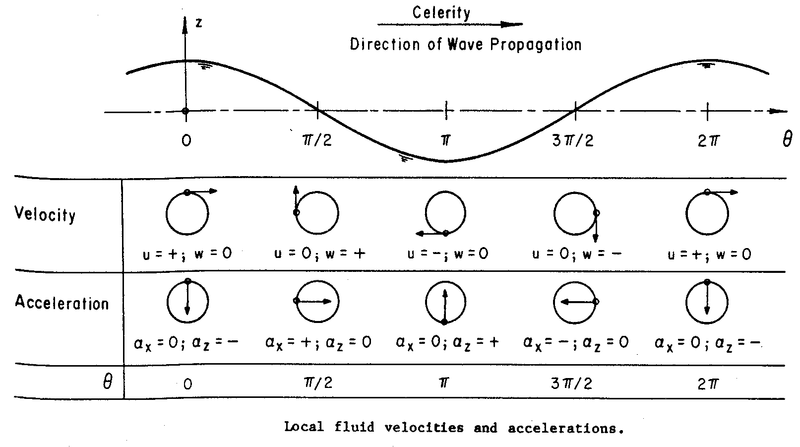In the context of a wave cyclic load, the velocity and resulting drag is first applied in one direction through Π/2 - 3Π/2 then reverses for during 3Π/2 - Π/2. Net orbital particle velocity at any depth is zero, but the drag vectors applied load to the structure are not zero, because the position of the load vector applied to the structure raises and falls with the height of the wave. But drag load is the same for equal velocities and drag sums to zero as there is no net movement of any water particles between cycles. The load vector components applied to the structure are sinusoidal functions, as are the vector's placements.
A cork (length =0) floating on a pure Airy wave, with no superimposed current, will orbit, but not experience any net movement forward or reverse,
(Assuming the structure is exposed to full wave height...)
A structure with length equal to that of the wavelength will have equal drag force applied in both forward and reverse directions at any given time.
A structure of half wavelength has a net forward force for a time equal to 1/2 the waves period, then a net reverse force for the next half period.
However those forward and reverse drags always create an overturning moment because the height of the wave applies the forward and reverse components at different heights.


